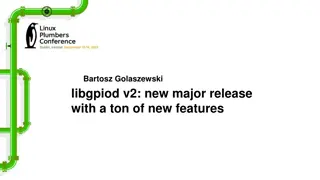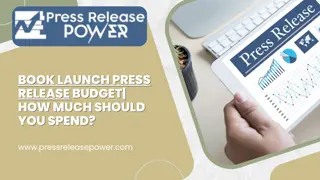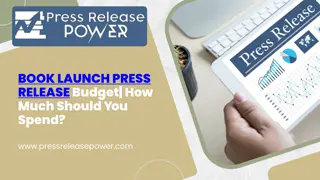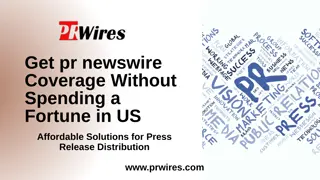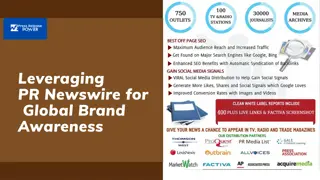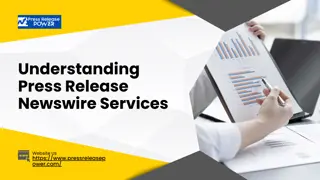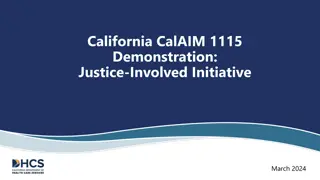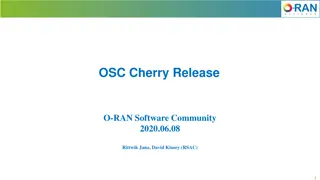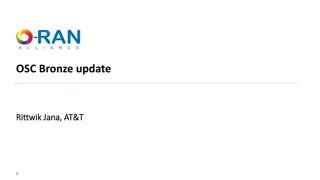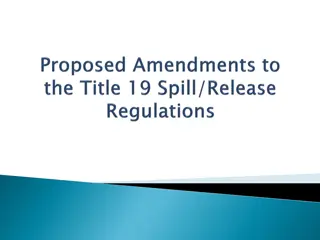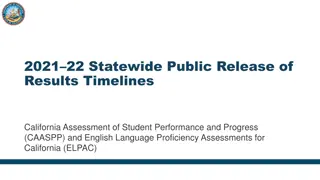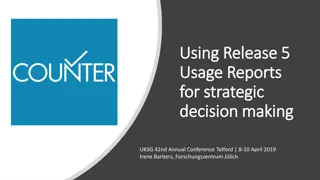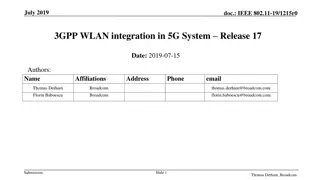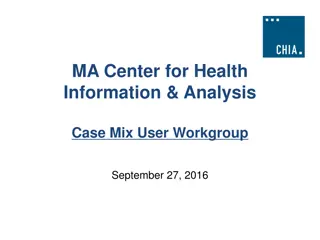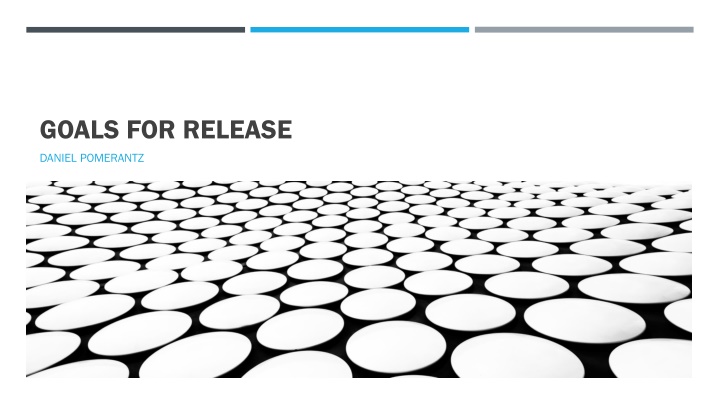
Transforming an Outdated Course: Goals for a New Release
Explore the goals and background of releasing a new course in computer science department to make students informed citizens on technology issues, with an emphasis on AI ethics and discussions. Discover the strategy to reinvigorate the curriculum and engage students in meaningful learning experiences.
Download Presentation

Please find below an Image/Link to download the presentation.
The content on the website is provided AS IS for your information and personal use only. It may not be sold, licensed, or shared on other websites without obtaining consent from the author. If you encounter any issues during the download, it is possible that the publisher has removed the file from their server.
You are allowed to download the files provided on this website for personal or commercial use, subject to the condition that they are used lawfully. All files are the property of their respective owners.
The content on the website is provided AS IS for your information and personal use only. It may not be sold, licensed, or shared on other websites without obtaining consent from the author.
E N D
Presentation Transcript
GOALS FOR RELEASE DANIEL POMERANTZ
AGENDA Goals of release Approach Status / Sample slides Questions / Feedback
GOALS OF RELEASE : BACKGROUND Currently, there is a complementary course "Intro to Computers" in the computer science department Approximately 5-7 sections per term with 32 students each This course is, for the most part, an outdated course that covers Microsoft Office suite Useful skills (especially Excel), but most students already know how to make a Word document. So a lot of course time is a waste for most students. Course is extremely important for students who have not had the privilege of growing up with computers. However, each semester there are usually only 3 or 4 students (at most) like this
GOALS OF RELEASE : NEW COURSE (EXISTING COURSE NUMBER) The ministry requirements are very broad and we can use the existing course framework to create a new course A course to help students become "informed citizens" on issues related to computers will benefit more students Not necessarily exclusive to AI, but AI is clearly an important part of such a course Could keep one section of the course with the old Microsoft Office format
INFORMED CITIZENS In order to become informed citizens, students need to do two things: Learn what the issues are Be able to have intelligent discussions about the issues. It is important that this include discussion about the negatives of the technologies, which usually involve ethics, something that I know nothing about. Understanding a little bit about how they work is useful.
AI ETHICS COURSE Students would spend lecture time learning about the topics During lab periods, they would debate the ethical considerations of the technologies For homework, they would do some readings/questions They would write an essay about a selected topic (a ministerial requirement, but also a good idea) There could be some sort of "debate club" or "mock trial" (TBD if this is feasible)
RELEASE GOALS Produce a list of topics (about 6) that a teacher could choose from for the course (P0 goal) For each topic in the sample list, produce slides (in "final form") that can be used for such a course defining the "what" as well as going over, broadly, some of the pros/cons (P0 goal) Make a list of readings so that teachers/students can learn more about the topics. Students would have to read some of these materials throughout the term (P0 goal) Have a more concrete idea of how the evaluation would be. (P1 goal) For essays, it's fairly obvious, but the "debate club" aspect is trickier Also, how many topics are feasible to fit into a course? Study ethics from the perspective of learning a couple frameworks (P2 goal) Utilitarian? Individualism? Some other framework? etc. It would be useful for students to speak more formally about whether something is "good" or "bad"
APPROACH Release time is instead of a 45 hour course To avoid procrastinating, I put into my calendar 3 hours and 12 minutes per week as if it were a regular class Additional time spent since teaching isn't just showing up, but at least pre- allocating some time this way will ensure I don't skip it entirely any weeks
STEP 1 Compile a list of potential topics. This list can be added to as I go Expectation is that the initial list will be updated quite a bit (topics merged, split up, etc) Topic list doesn't necessarily have to be limited to a 45 hour course
STEP 2 For each topic, produce a very basic set of slides. The slides will cover the "what" of an issue along with a very high level outline of the pros and cons of the topic Essentially, this is the "Wikipedia slides" As the semester continues (and further after that), the intention is to be able to add to these Try to have "food for thought" questions at the end of each deck. These could translate into assignment questions, debate topics, etc
STEP 3 Learn about each of these topics and the trade-offs in more depth than I currently know I'd like to discuss the issues at a depth more detailed than "privacy is good!" Start building up a bibliography and further reading for each of the slides This will involve researching to find articles, etc as well as reading them myself While doing this, add some learning activities to structure the slides in a better way
WHERE I'M AT : INITIAL LIST OF TOPICS Big Data Facial Recognition Online Privacy / Big Brother Self-Driving Cars Distance based medicine Pandemic Deep fakes Bias in machine learning algorithm
Sample slide : Con of using big data Sample slide : Con of using big data thoughtlessly thoughtlessly CORRELATION IS NOT CAUSATION! https://www.kdnuggets.com/201 9/09/risk-ai-big-data.html
SAMPLE ACTIVITY (BIG DATA) Suppose you want to use analytics to predict the stock market. You run a computer algorithm to look at all of Microsoft stock prices since the year 2000. The computer comes up with the following rule. Is this rule a good rule or not? "Microsoft stock will increase if the day is January 2nd, 2000 OR January 3rd, 2000 OR January 6th 2000, OR January 10th 2000, OR etc.
SAMPLE ACTIVITY (BIG DATA): ARE THESE GOOD? At the University of Alabama, data analysis found that students who asked for their transcripts were at risk of dropping out of school. In response, school administrators decided to offer more resources to all students who request transcripts At Georgia State University, they used analytical tools to give academic counselors information sooner, again to highlight struggling students. According to the school, graduation rates among African Americans and Hispanic students increased from 18% to 55% after doing this. One administration official was quoted as saying, As soon as a student makes a wrong turn, the system s already recalibrating to get him or her back on the right path." Srcs: https://edtechmagazine.com/higher/article/2019/08/what-can-real-time-data-analytics-do-higher- education-perfcon and https://edtechmagazine.com/higher/article/2019/05/universities-use-data-analytics- tools-support-academic-advising
Sample slide : Food for thought about facial Sample slide : Food for thought about facial recognition recognition QUESTIONS FOR THOUGHT Is it ethical for parents to post pictures of their children on Facebook? Is it ethical for Facebook to store these photos? CCTVs can be used to catch criminals. However, they can also be used to catch protesters. How do we decide where to install CCTVs? Do software companies have an ethical responsibility? Are you worried about this? What are some potential concerns about this technology for our legal system?

